Before and after
And a visit from the prime minister
I love a deadline, and this week we had a government declared deadline – to clean the brush from around our buildings to avoid wildfires…and a hefty fine.
It also coincided with a government declared cerca sanitária – a cordon sanitaire – for us to stay in our parish as a final push to hammer down COVID-19 ahead of re-opening.
Combine the two with some early starts and late finishes and we ended the week with aches and pains and the satisfactory evidence of some hard work.
We have been very keen to get rid of our two hectares or so of eucalyptus plantation – not least because it’s on our flat and most useful land.
But we hated them even before we started to think about building projects.
They suck up a huge amount of water, allow few other species to grow within their industrial rows (except - strangely - some great chanterelle mushrooms this year), and are a serious fire risk.
There are fires across Portugal every year, but you might remember 2017 when a new form of mega-fire broke out in the central region killing dozens and injuring hundreds.
Half a million hectares burned – 5% of the country.
As well as a warming climate and its resulting drought, remote forests have been left to grow wild by a young generation that abandoned the countryside from the 1980s.
That fuelled the fires as this piece from National Geographic explains really well.
Portugal also has more eucalyptus plantations than any other EU country – invasive thirsty trees with an oil that increases wildfire intensity as this activist research explains.
Once subsidised by the government and with the support of a strong paper and pulp lobby, new plantations have now been banned and regulations have been introduced for fire breaks and brush removal.
There’s an interesting debate about re-foresting for carbon capture I stumbled across in Mongabay which gets into the weeds (so to speak): “for many large-scale tree-planting initiatives, the focus is on the number of new trees that end up in the ground, not on planting the right trees in the right places…”
We’re focussed of deforestation right now, but we will be replanting a mixed forest of cork oaks and pines and olives and fruit trees as part of our grand landscaping plan.
Lionel(ee) has done an amazing job with his chainsaws and we’re now waiting for the big machine to come in and dig up all the eucalyptus roots so we can start preparing the land to build.
My chainsaw is still in the shop…apparently, I overworked it and have arranged for a heart transplant.
It seems I would have done a similar thing with my strimmer if Timi hadn’t come by to help us out and taught me how to use it properly – another case of things that people just know and that I am slowly getting to learn through experience.
It’s frustrating, it’s annoying and it’s costly, but hopefully there will come a time when I can work without breaking things.
Most parts of the farm now look neat and nicely trimmed…apart from the bottom of the hill where the terrible silves (brambles) are back with a vengeance.
Ana and I had an awful afternoon ripping out vines from behind the house which had woven themselves into the old chicken wire fence – it’s amazing how fast things grow here.
The resulting walled garden is going to be a great place for us to plant raspberries, strawberries, blueberries and some little herbs…and hopefully the bougainvillaea survived to give us a flash of colour.
We borrowed a trailer from our Bavarian neighbours Franz and Erna to transport some of the debris to a place on our land a bit further from the houses.
Ana has been learning about hügelkultur for a while now (inspired by the Swedish parentals) and we were finally able to put the research into action by layering an old fallen agave, cardboard, dried wood tree clippings and the green vines into a shallow hole.
We picked a spot on a terrace near the vegetable patch between two fruit trees.
The plan is to plant asparagus, but we still need to make time to transport more soil to cover it.
And that was back-breaking work. The soil seems so light and sandy, but then as we discovered when we started building in November, there’s clay just a few centimetres below the surface…and you wouldn’t want to be a gravedigger here.
We also finished painting the outside of the guesthouse.
It’s traditional to have colourful barras or borders on the doors, windows and around the bottom quarter of the house, but we think the white looks amazing, and with some colourful shutters we should be in good shape.
So, the next tasks are painting and rebuilding the pergola, spray painting the shutters and then getting the interiors sorted...
Soooo much to do…so little time…please send out your young people to help us!
The cerca sanitaria certainly added a little spice to life in São Teotónio this week with police and military checkpoints on our freguesia (parish) borders. It made national news.
The statistics showed that we had a spike in COVID-19 cases, and so as the rest of the country opened up, we briefly took a step back.
There have been occasional outbreaks in Alentejo, but the province covers a third of the country and has had a tiny fraction of cases and deaths.
The restrictions haven’t been so restrictive for us – mostly because we have so much to do that we rarely wander too far from the farm – but this was a hot topic.
The reason for the spike was an outbreak in an agricultural greenhouse – seasonal migrant workers come here and often live in cramped shared accommodation which raised concern.
A lockdown is determined by cases per head of population, but while seasonal workers are counted as COVID-19 cases, they aren’t included in the overall population, creating a big statistical distortion for a sparse rural community.
There was local uproar; our fabulous lawyer Ana Aleixo is the president of the municipal assembly and she weighed in criticising the central government…next thing the prime minister was here in São Teotónio to lift the cordon sanitaire.
(Why do the French not have a word for cordon sanitaire…or entrepreneur for that matter?)
It also helped shine a light on the conditions some of the migrant workers have to endure…and the fact the greenhouses encroach on the national park…one of the few issues we have here.
After all the hard work we treated ourselves to a little holiday – an evening in the Algarve with our friends Richard and Pauline who are doing amazing work on their riverside land and have reopened their Earth shop and café in Carvoeiro.
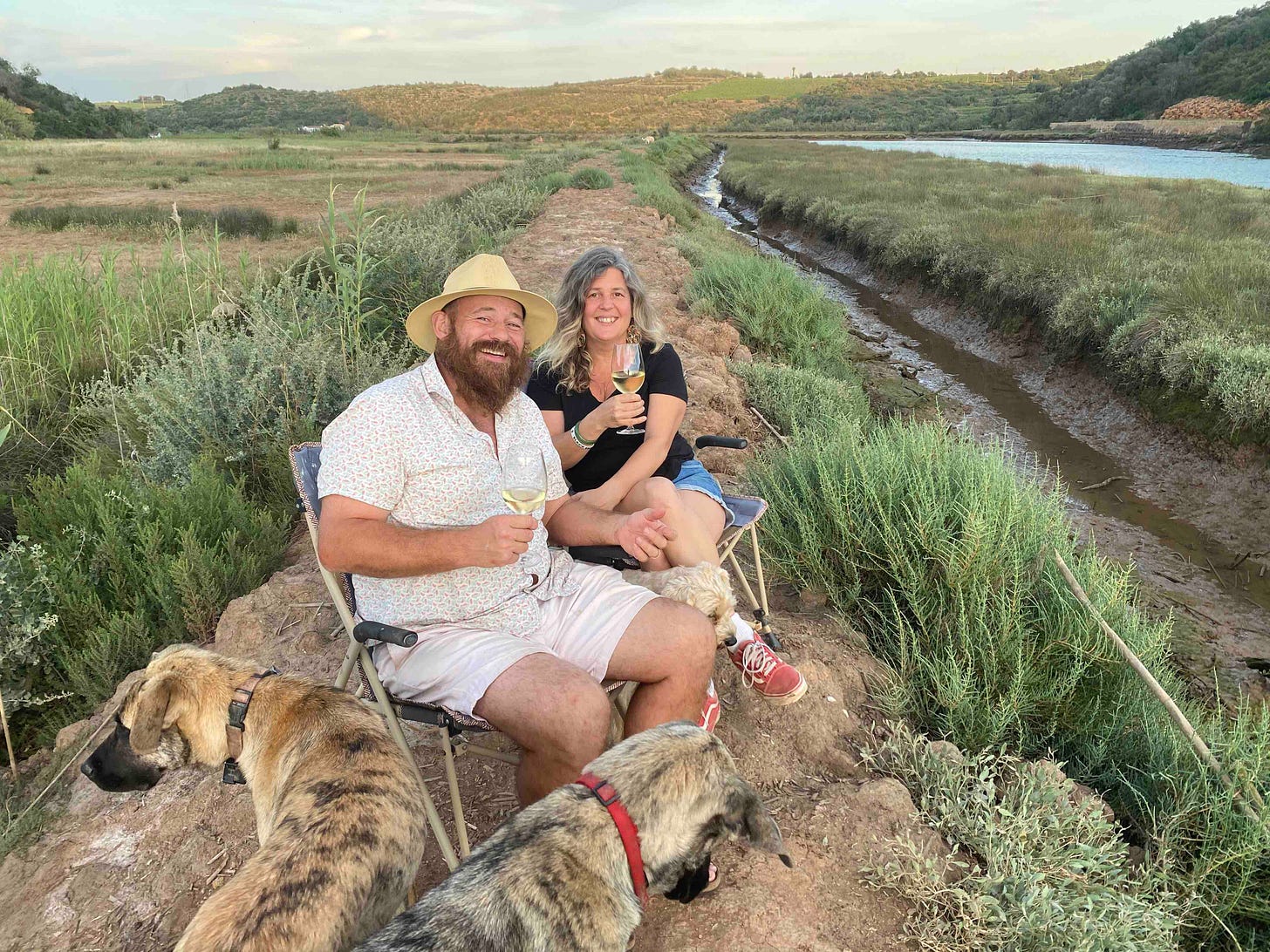
They – and a lot of other businesses in the Algarve – are expecting a rush of visitors now Portugal has announced it will let tourists in from this week…and with it being one of the few countries on the UK’s green list.
Hope to see you soon!
Oh, and in the spirit of before and after photos…here’s another…it was time!


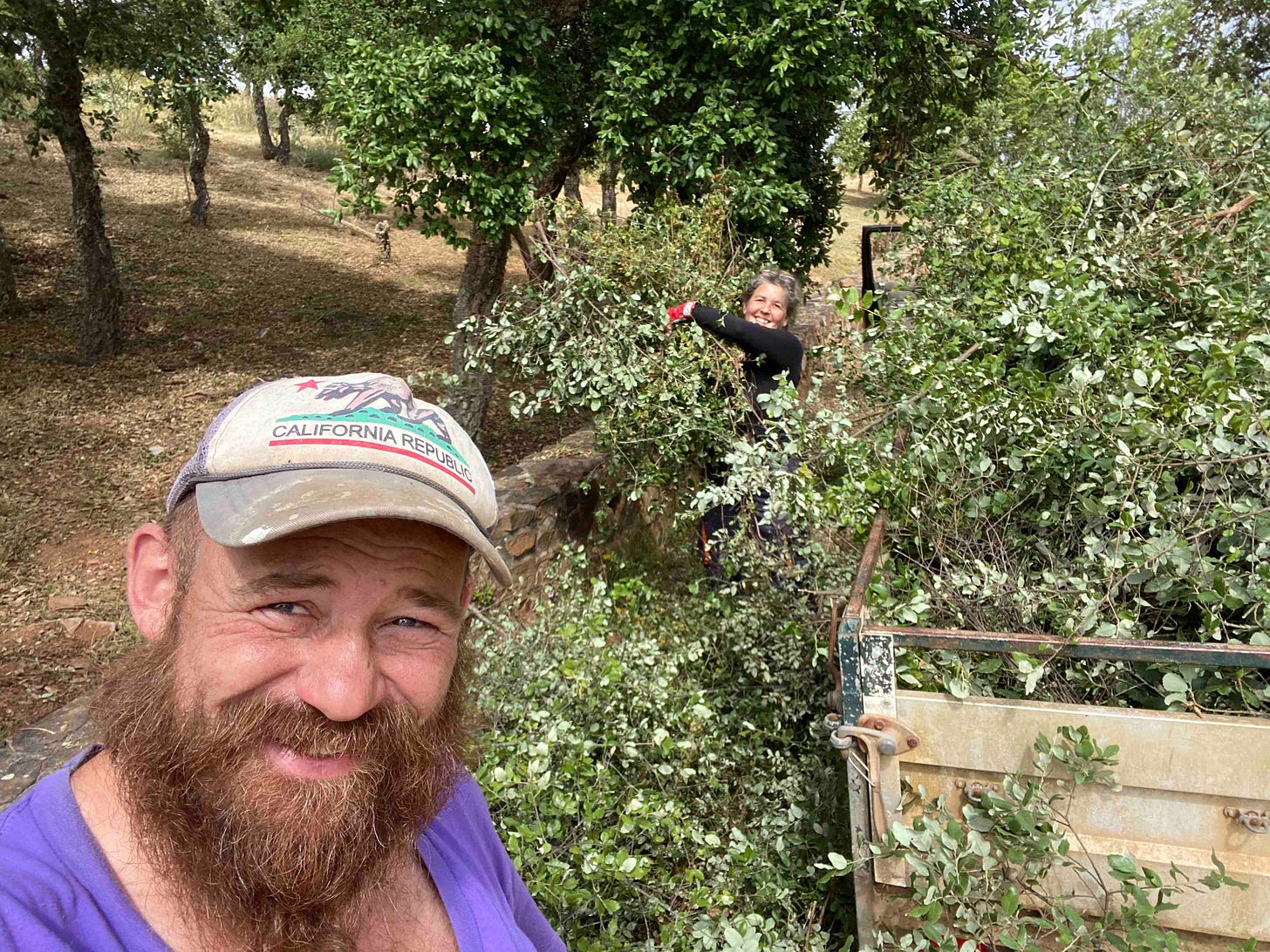
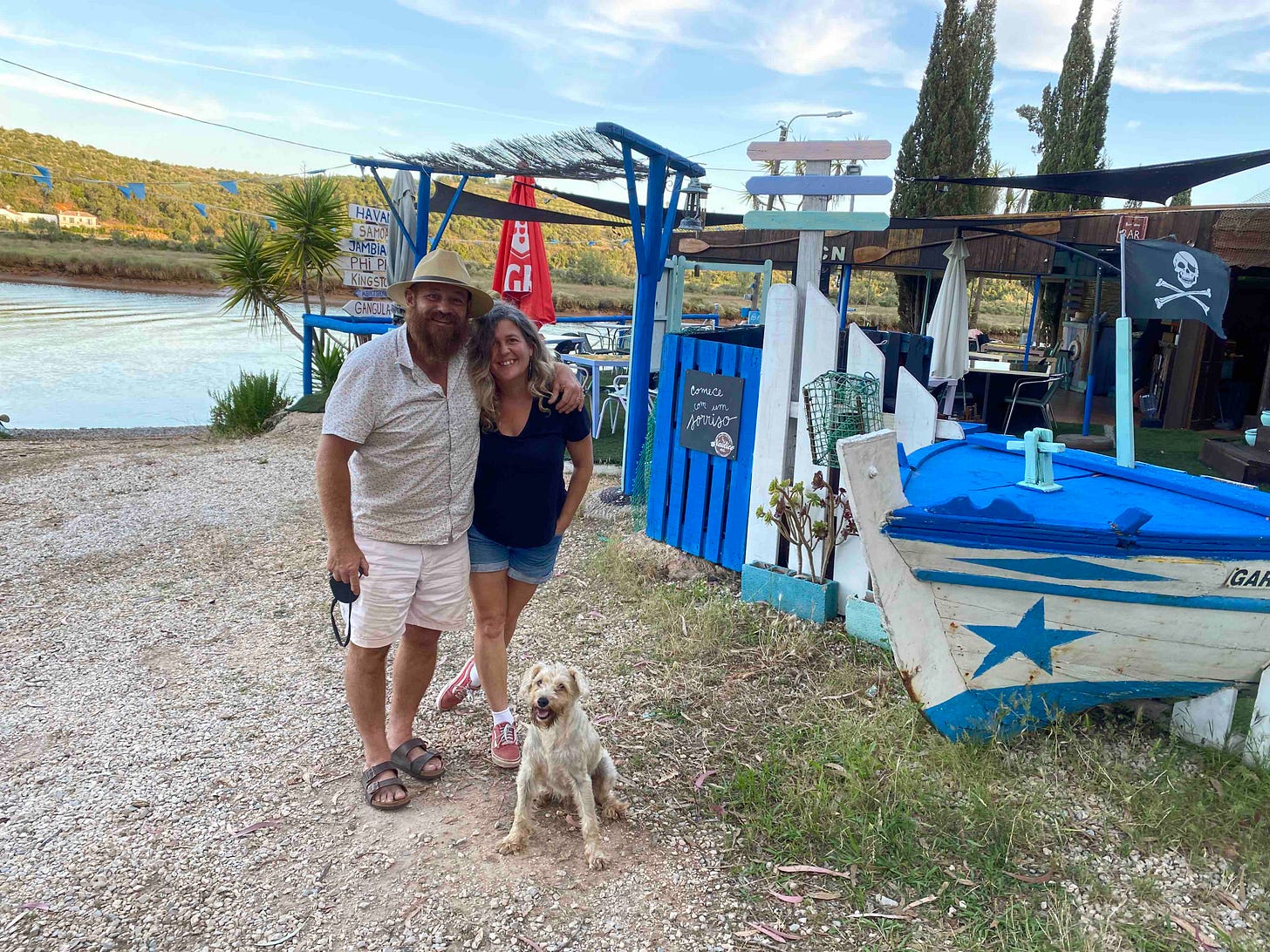
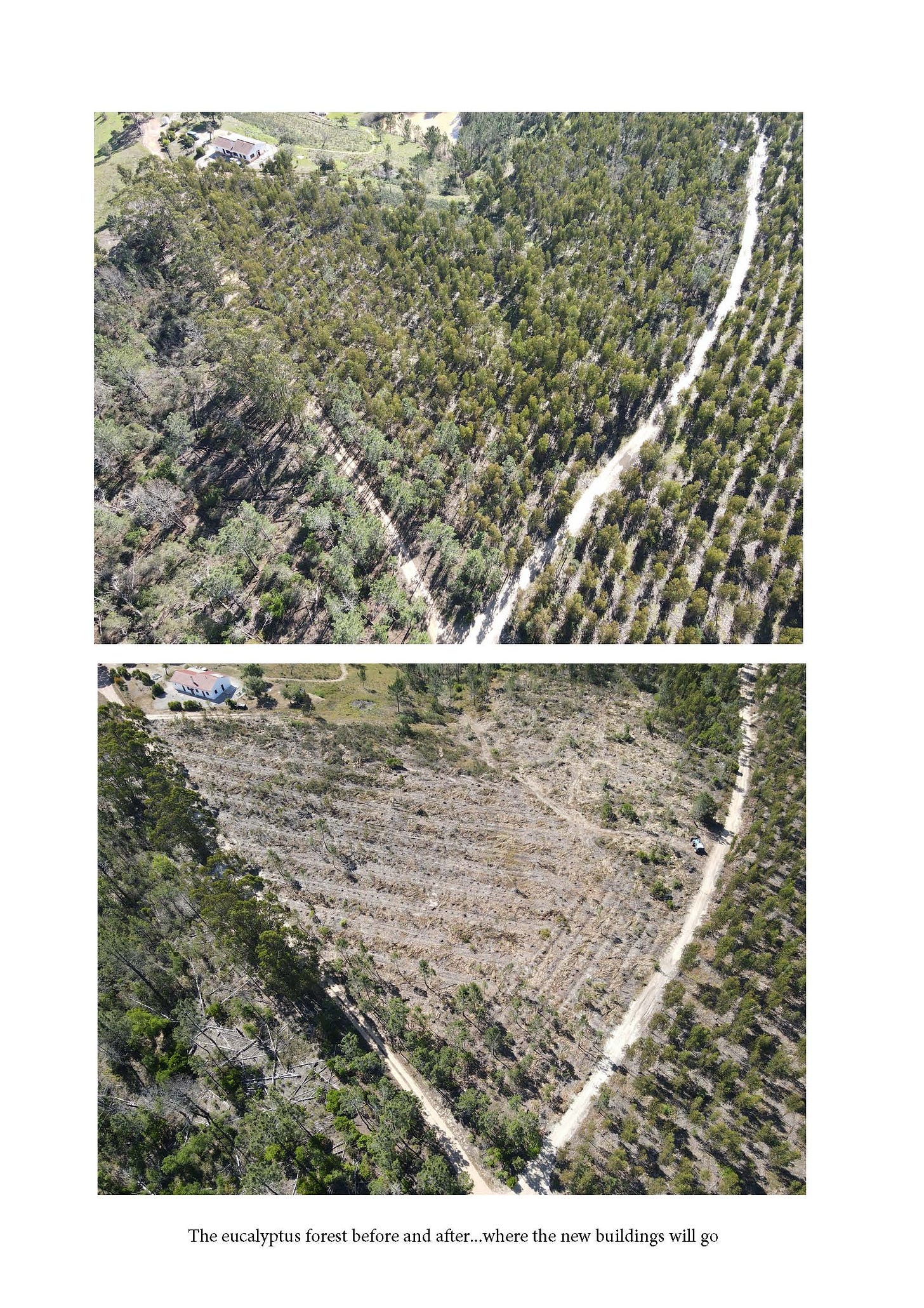
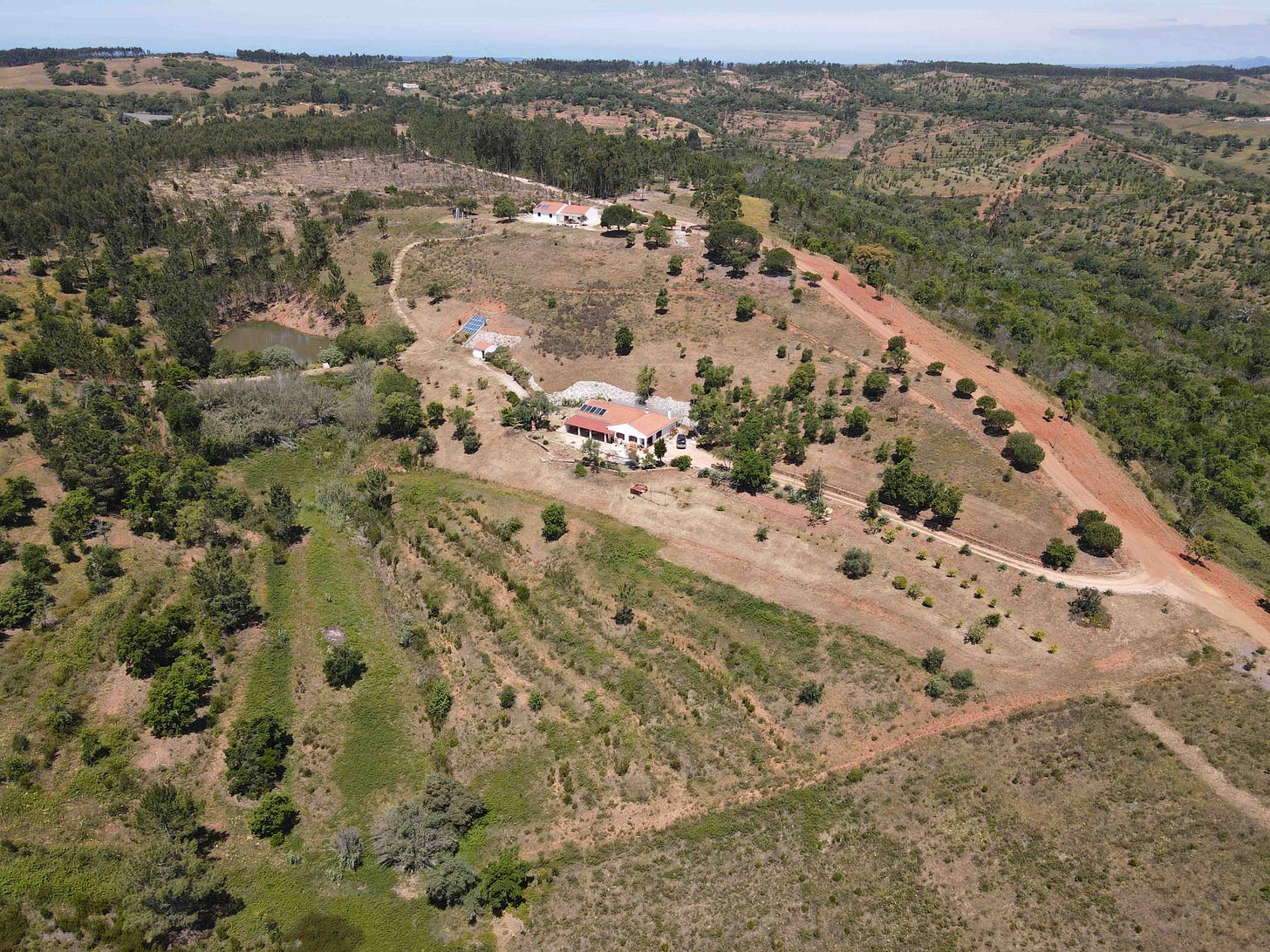
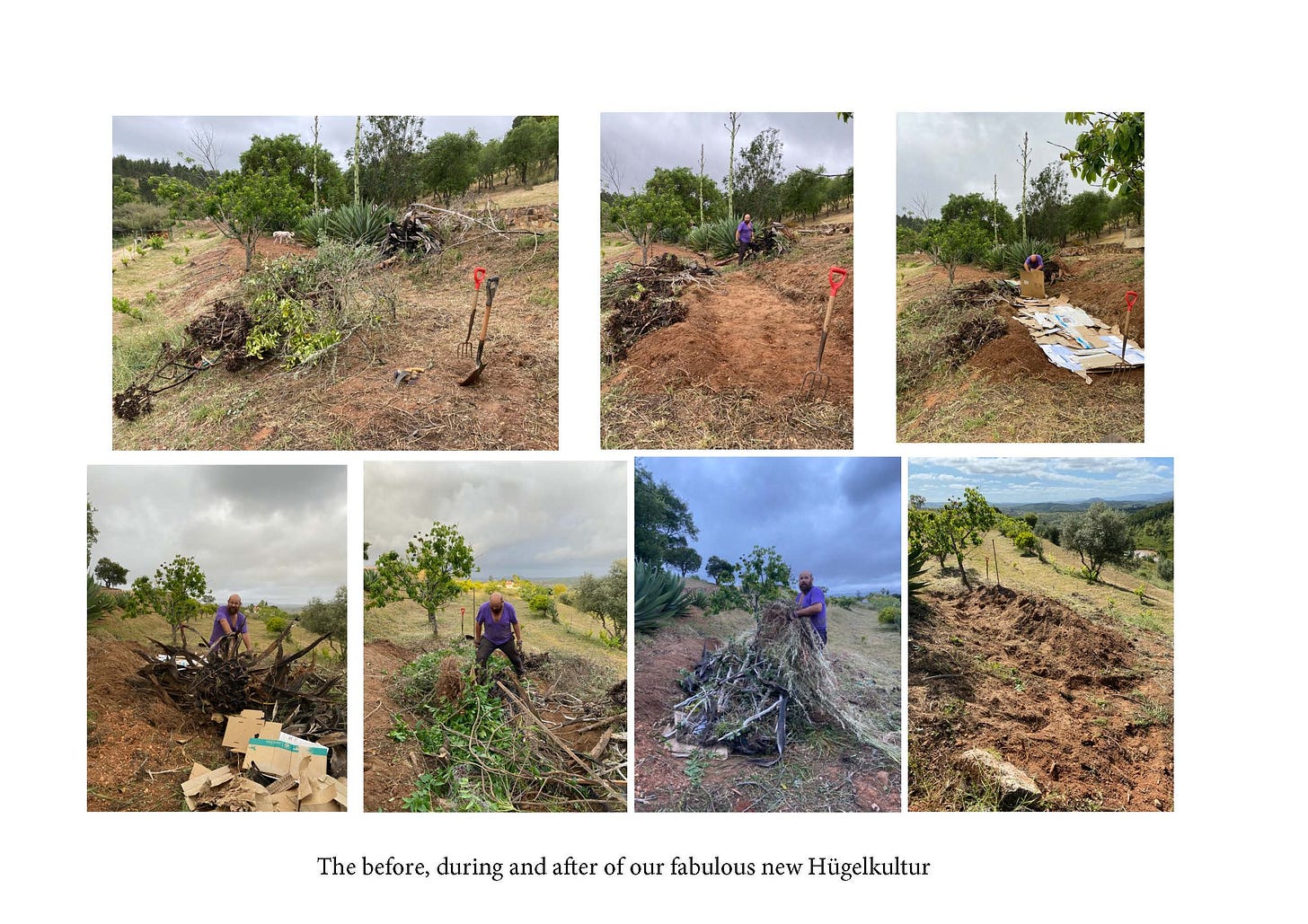
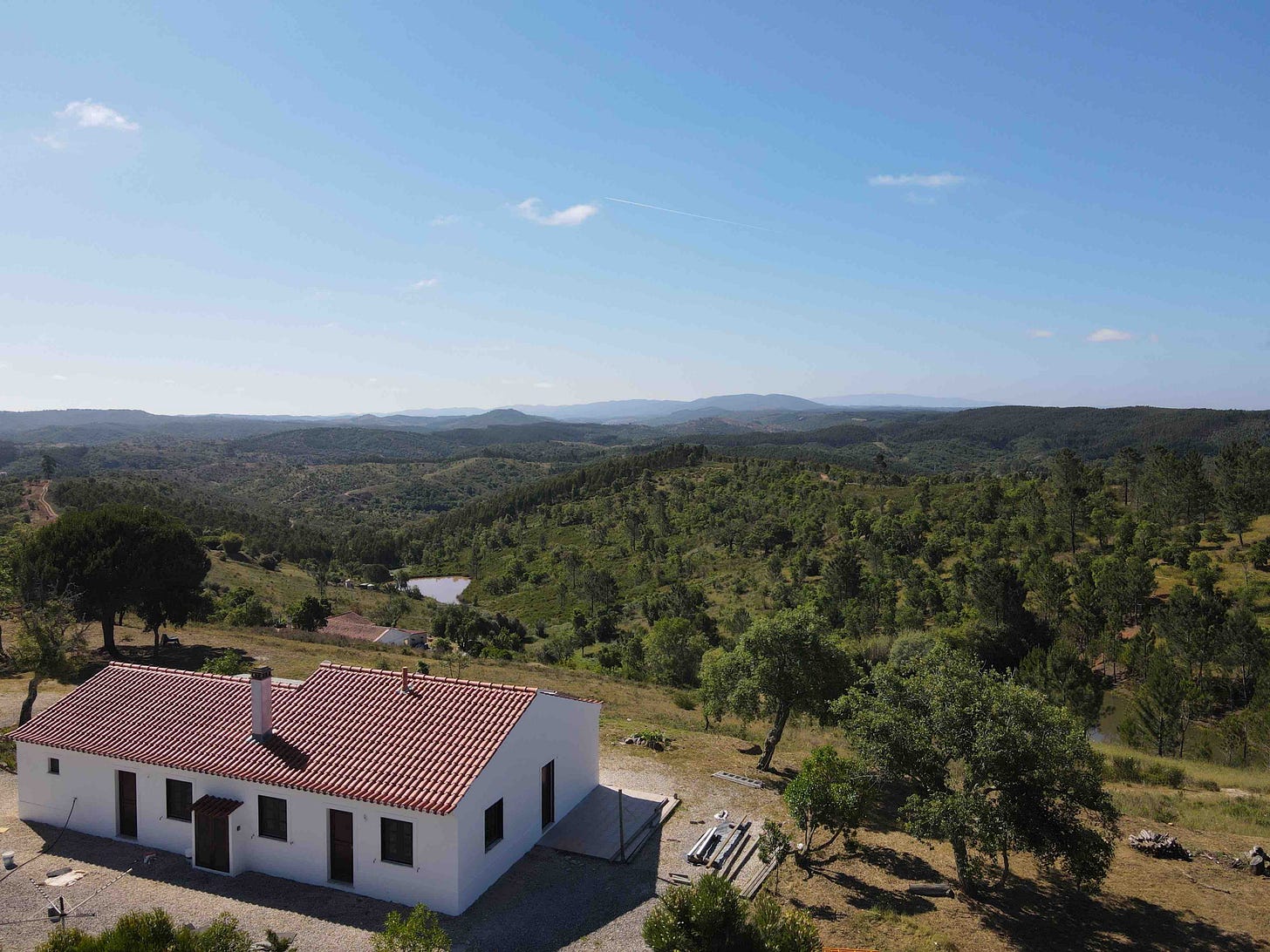
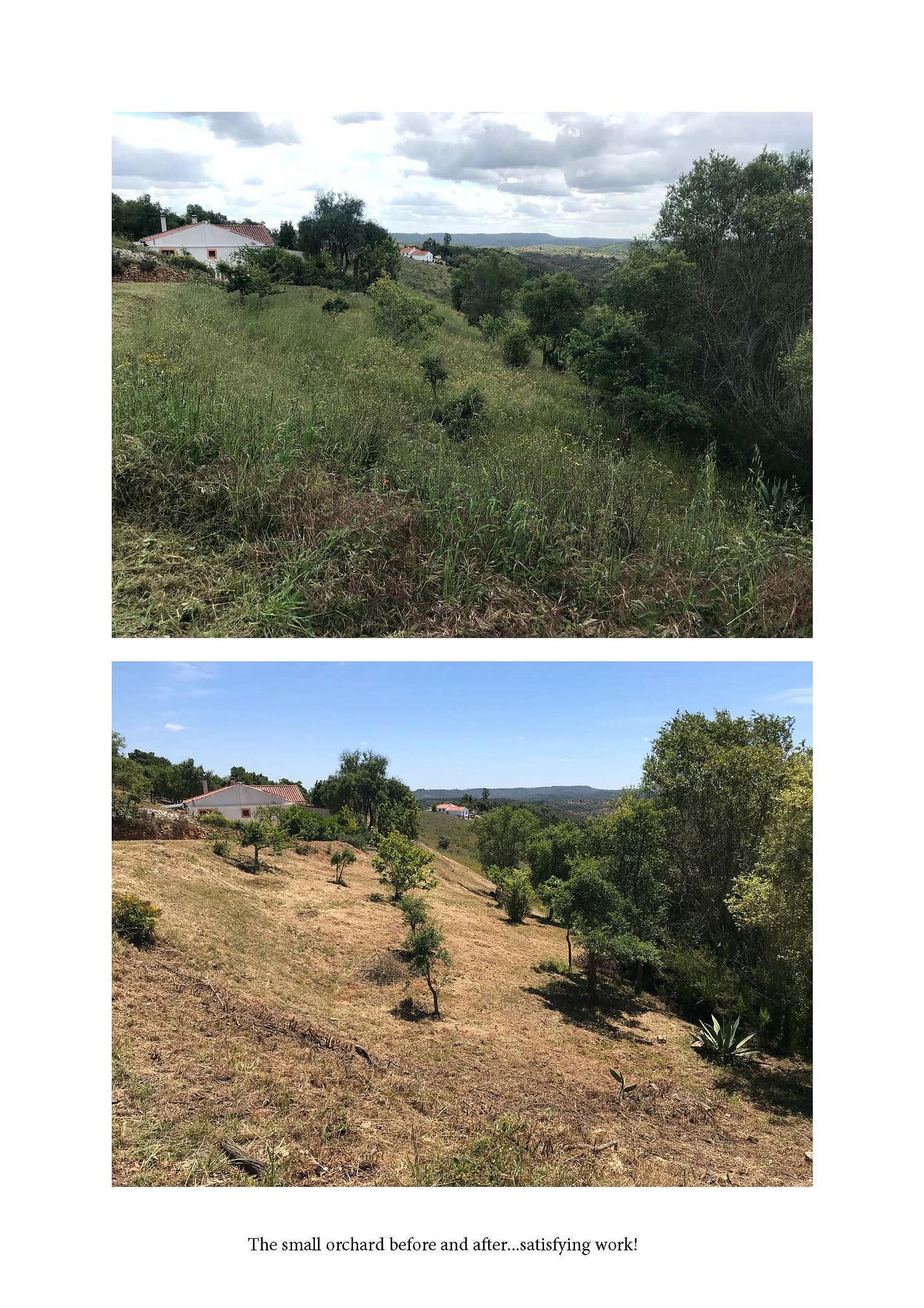
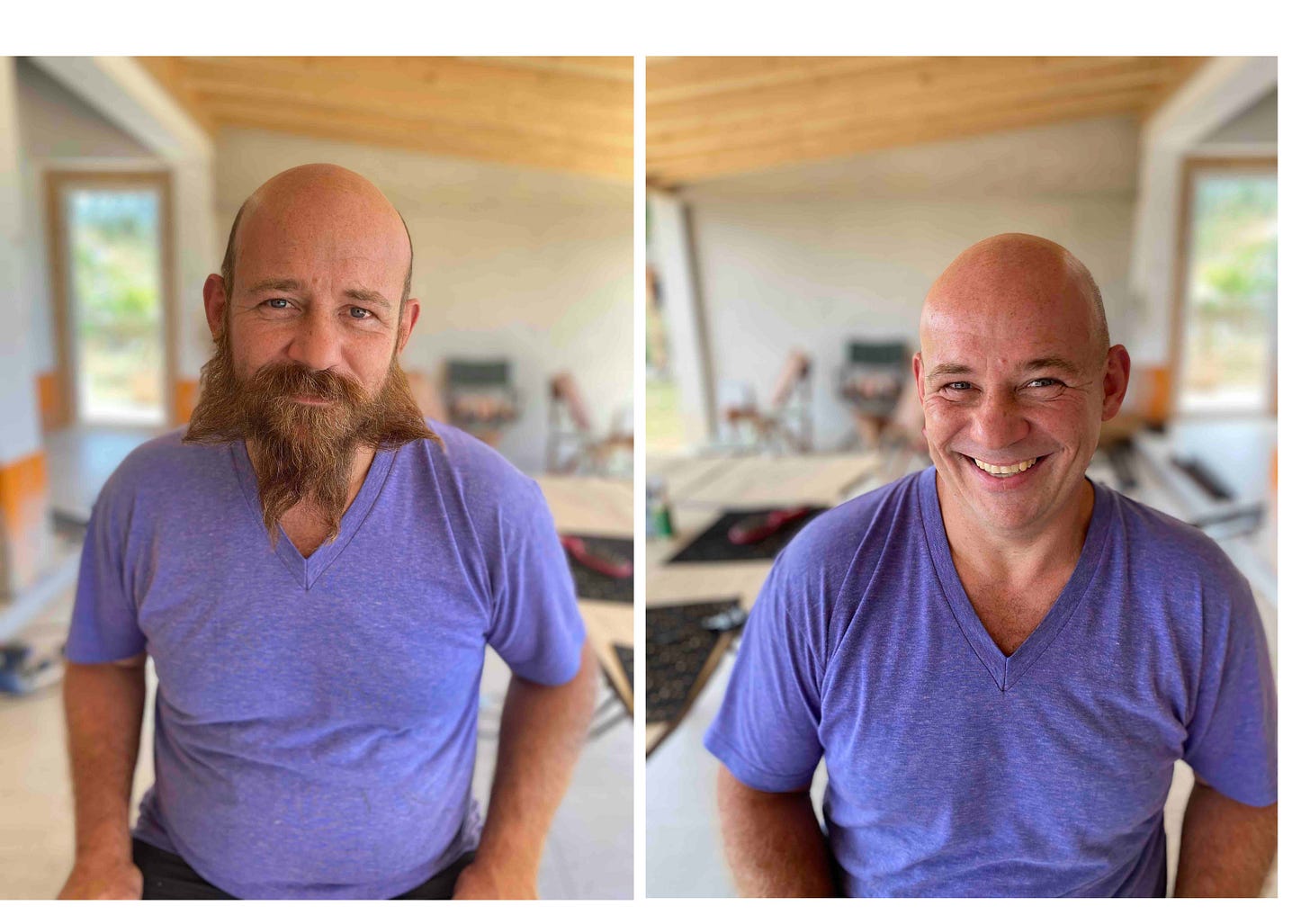
Loved this week’s article and your plans for replanting native trees. My partner’s family ( James Westhead who also follows you) has a very old farm in the Algarve with a great mix of trees. - mainly almond, and fig trees and some carob trees and pomegranate too.
Much prefer the After!